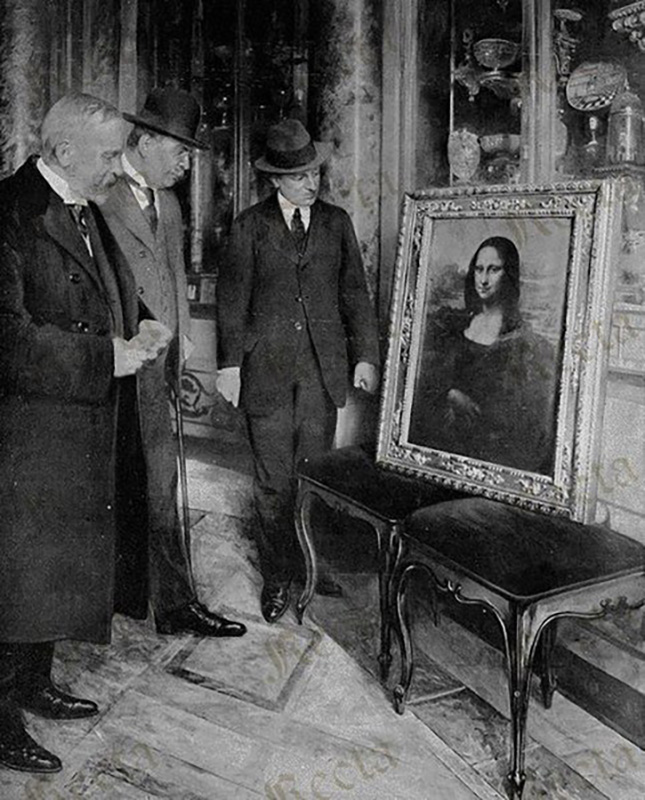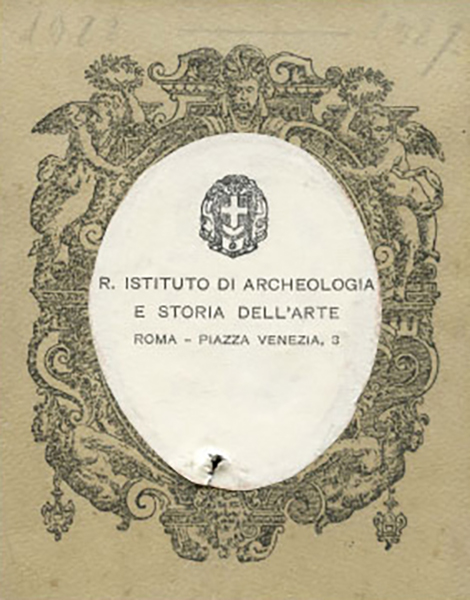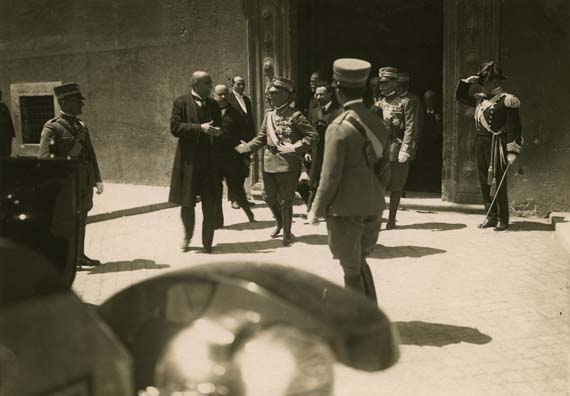Assigned to the newly-formed National Institute of Archaeology and Art History, the library was moved to the Renaissance palace of Pope Paul II (Pietro Barbo)

In 1918, Corrado Ricci (1858-1934), Italy’s General Director of Antiquities and Fine Art, succeeded in establishing the National Institute of Archaeology and Art History (INASA - the Istituto Nazionale di Archeologia e Storia dell’Arte). As its main scope was bibliographical documentation, it soon would become the home of the library. In 1922, now officially assigned to INASA, the library was given its definitive location in the rooms of the mezzanine level in Palazzo Venezia. That same year, the library received an important second donation, this time originating from Neapolitan writer Rocco Pagliara (1856-1914).

Corrado Ricci (centre) with painter and restorer Luigi Canevaghi (left) and art historian Giovanni Poggi (right), admiring the Mona Lisa at the Uffizi Gallery in Florence, 1903

Royal Institute of Archaeology and History of Art (INASA)

Grand opening of the Library in its definitive location (Palazzo Venezia); in the photograph, Corrado Ricci and King Victor Emanuel II exit the portal that still stands today